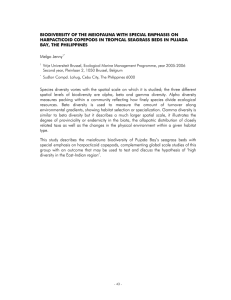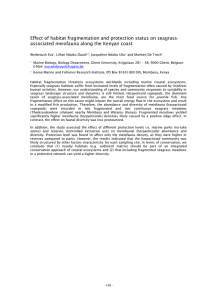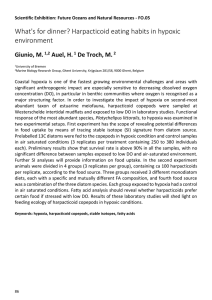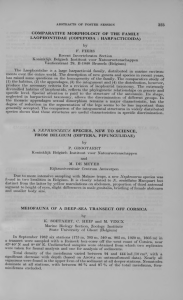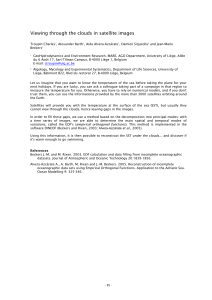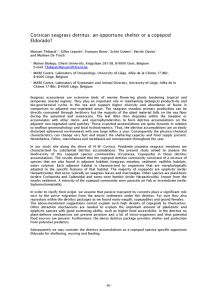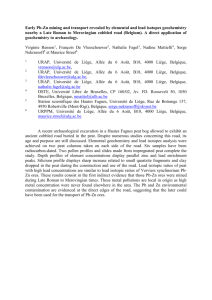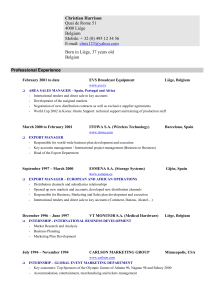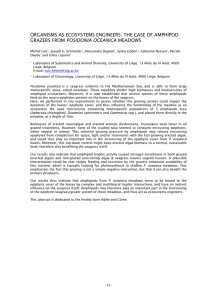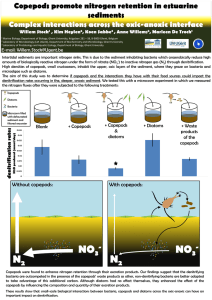THE ROLE OF MEIOFAUNA IN ENERGY TRANSFER IN A
advertisement
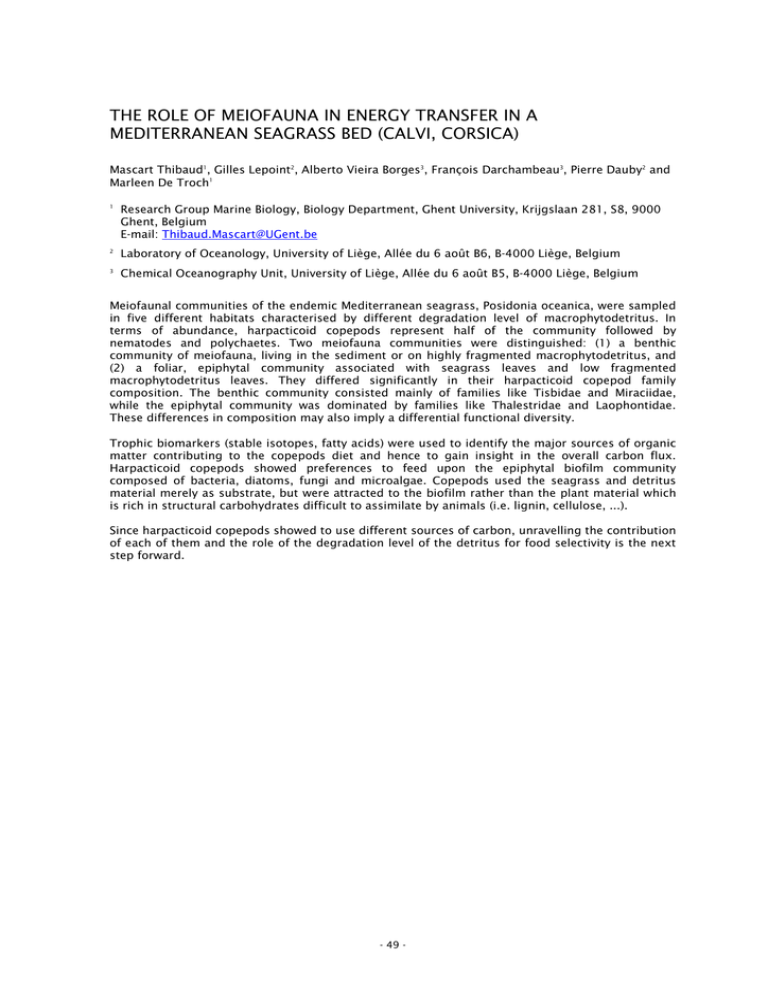
THE ROLE OF MEIOFAUNA IN ENERGY TRANSFER IN A MEDITERRANEAN SEAGRASS BED (CALVI, CORSICA) Mascart Thibaud1, Gilles Lepoint2, Alberto Vieira Borges3, François Darchambeau3, Pierre Dauby2 and Marleen De Troch1 1 Research Group Marine Biology, Biology Department, Ghent University, Krijgslaan 281, S8, 9000 Ghent, Belgium E-mail: Thibaud.Mascart@UGent.be 2 Laboratory of Oceanology, University of Liège, Allée du 6 août B6, B-4000 Liège, Belgium 3 Chemical Oceanography Unit, University of Liège, Allée du 6 août B5, B-4000 Liège, Belgium Meiofaunal communities of the endemic Mediterranean seagrass, Posidonia oceanica, were sampled in five different habitats characterised by different degradation level of macrophytodetritus. In terms of abundance, harpacticoid copepods represent half of the community followed by nematodes and polychaetes. Two meiofauna communities were distinguished: (1) a benthic community of meiofauna, living in the sediment or on highly fragmented macrophytodetritus, and (2) a foliar, epiphytal community associated with seagrass leaves and low fragmented macrophytodetritus leaves. They differed significantly in their harpacticoid copepod family composition. The benthic community consisted mainly of families like Tisbidae and Miraciidae, while the epiphytal community was dominated by families like Thalestridae and Laophontidae. These differences in composition may also imply a differential functional diversity. Trophic biomarkers (stable isotopes, fatty acids) were used to identify the major sources of organic matter contributing to the copepods diet and hence to gain insight in the overall carbon flux. Harpacticoid copepods showed preferences to feed upon the epiphytal biofilm community composed of bacteria, diatoms, fungi and microalgae. Copepods used the seagrass and detritus material merely as substrate, but were attracted to the biofilm rather than the plant material which is rich in structural carbohydrates difficult to assimilate by animals (i.e. lignin, cellulose, ...). Since harpacticoid copepods showed to use different sources of carbon, unravelling the contribution of each of them and the role of the degradation level of the detritus for food selectivity is the next step forward. - 49 -
